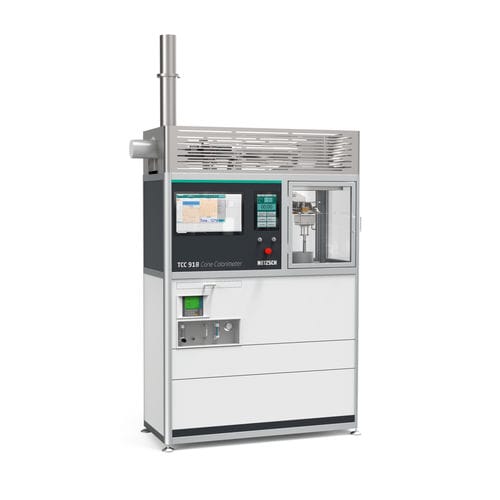For Fire Testing and Fire Safety Engineering in Accordance with ISO 5660-1
A Cone Calorimeter is used to perform a “reaction to fire” test, which is described in the ISO standard 5660-1. In this test a specimen of 100 by 100 mm and a maximum height of 50 mm is placed into the instrument’s load cell. The material is then exposed to controlled levels of irradiance by the cone heater, ignited by sparks and consequently burned. The TCC 918 analyzes the combustion gases and measures the smoke produced from a test specimen that is being exposed to a certain heat flux. The principle is known as the “oxygen consumption principle” and is among the methods of calorimetry. Accuracy can be improved by analyzing carbon monoxide and carbon dioxide concentrations.
The TCC 918 is in accordance with all established standards including ISO 5660-1, ASTM E1354, ASTM E1474; ASTM E1740, ASTM F1550, etc.
Analysis of Gases and Measurement of Smoke Density
The combustion gases produced pass through the heating cone and are collected by an exhaust duct system with a centrifugal fan and hood. A laser photometric beam determines the amount of smoke produced. The TCC 918 is equipped with the robust Siemens ULTRAMAT/ OXYMAT 6E, featuring corrosion-resistant materials in the gas channel. It serves for the detection of two infrared components, CO and CO2, as well as O2 in accordance with the standards.




